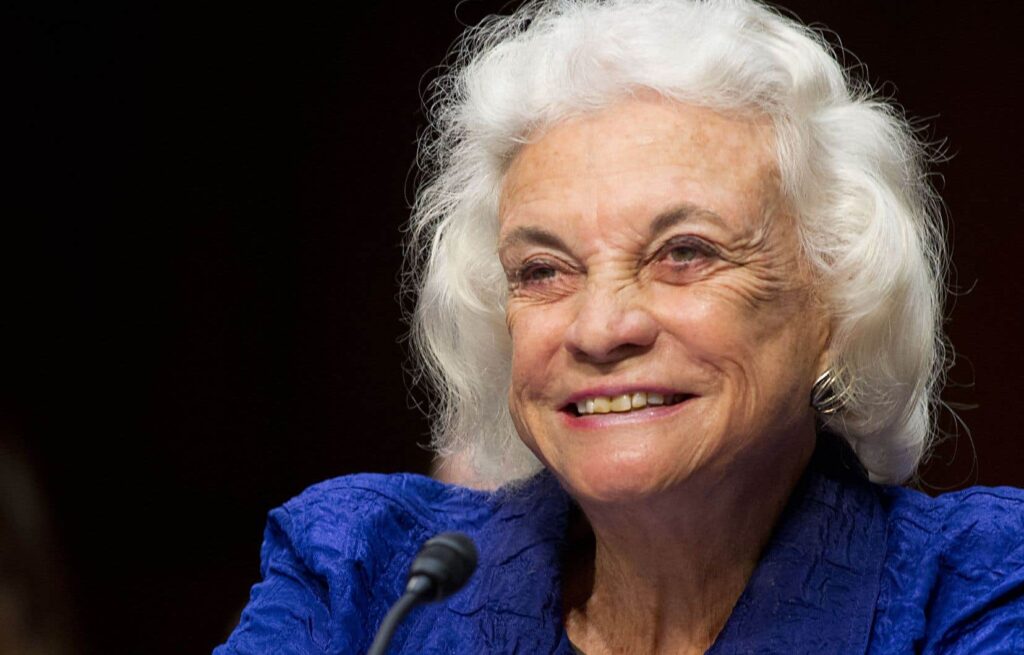Former American judge Sandra Day O’Connor, the first woman appointed to the Supreme Court of the United States and considered one of the voices of moderation within the Court, died Friday at the age of 93.
Chosen in 1981 by the Republican president of the time, Ronald Reagan, for whom it was the first appointment – for life – to the Supreme Court, she retired in 2006, notably to be able to help her husband John O’Connor , finally died in 2009, suffering from Alzheimer’s disease.
After her, five other female judges were appointed to the Supreme Court, including four currently in office, a record for this institution.
Sandra Day O’Connor herself announced in 2018 that she was leaving public life to fight “dementia, probably Alzheimer’s disease”.
She died Friday morning in Phoenix, capital of the state of Arizona, the Court said in a press release, specifying that she had died “of complications linked to advanced dementia, probably Alzheimer’s, and a respiratory disease.” .
“Daughter of the American Southwest, Sandra Day O’Connor blazed a historic trail as the first female justice of our country’s Supreme Court,” wrote Chief Justice John Roberts, praising “her unwavering determination, her undeniable competence and his disarming frankness.
“At the Supreme Court we mourn a beloved colleague, a fiercely independent advocate for the rule of law, and an eloquent civil rights activist,” he added.
Throughout her almost quarter century on the Supreme Court, she often swayed the majority on decisive judgments through her centrist positioning.
“It is currently unquestionably the Court of Sandra Day O’Connor,” said law professor Erwin Chemerinsky, currently dean of the Berkeley Law School, in California, in 2001.
“In virtually every area of constitutional law, its 5th deciding vote determines what the majority and minority position will be. The lawyers who plead before the Court and submit their written arguments know that in practice they often address an audience of only one person,” he said.
“Desert Cowgirl”
In 1989 and then in 1992, Sandra Day O’Connor saved the Roe vs. Wade ruling of 1973 — recognizing a federal right to abortion by refusing to add her voice to those of four conservative judges. However, this was finally overturned by the current Court in June 2022.
On the other hand, she joined the conservative majority of the Court to block the recount of votes in Florida in the presidential election in 2000, allowing Republican candidate George W. Bush to win over his Democratic opponent Al Gore.
This graduate of the prestigious Stanford Law School in California was also known for her attachment to the rights of the federated states in the face of federal power.
It was a Democratic president, Barack Obama, who presented him with the highest American civilian distinction, the Medal of Freedom, in 2009.
“Sandra Day O’Connor was like the pilgrim in the poem she sometimes quoted — tracing a new path and building a bridge behind her so that all young women could follow her,” Barack Obama reacted to the announcement of her death in a statement.
“She always tried to find consensus,” said Republican Chuck Grassley, dean of the Senate. “He was the first judge for whom I had the honor of voting as a senator,” he said. The Senate ratified his nomination by 99 votes to 0.
“As a cowgirl from the Arizona desert, I never imagined one day becoming the first female justice on the Supreme Court of the United States,” the woman who grew up on a huge and isolated ranch wrote in 2018, saying she was “deeply grateful” for her journey, despite the illness.

